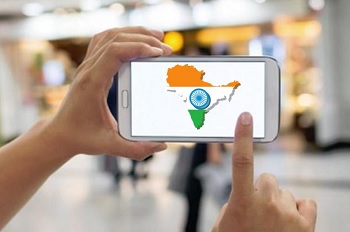New research has shown that by sending smartphone users discount offers, these consumers will head out and shop.
The results of research conducted by Forrester Consulting has now been revealed, and it has found that when mobile marketing includes the use of digital coupons that are received and redeemed by consumers through the use of their smartphones, those individuals are more likely to make a purchase to take advantage of the discount offer.
Even if these consumers don’t shop over mobile commerce, they will still use the coupons over desktop or in person.
Still, regardless of the fact that the vast majority chose to use the coupons received over mobile marketing to shop using a desktop computer or at a brick and mortar store, the research still showed that 25 percent of those who did act on the savings did so over m-commerce channels. The study was conducted in the United States during June 2014. It surveyed consumers with regards to the use of digital coupons.
This mobile marketing study showed that 33 percent of respondents switched to desktop to shop.
 It also found that another 27 percent chose to head to brick and mortar retail locations in order to use the digital coupon and take advantage of the savings that it offered. Fourteen percent of the respondents said that they used the coupons they received in order to make a purchase over a tablet device. That said, the tablet figure was far larger than those who used mail order catalogs or call centers, which accounted for only 2 percent of the purchases that were made using the digital coupons.
It also found that another 27 percent chose to head to brick and mortar retail locations in order to use the digital coupon and take advantage of the savings that it offered. Fourteen percent of the respondents said that they used the coupons they received in order to make a purchase over a tablet device. That said, the tablet figure was far larger than those who used mail order catalogs or call centers, which accounted for only 2 percent of the purchases that were made using the digital coupons.
The vast majority (55 percent) of the respondents said that they had found the discount offers after having conducted a search, and/or after having received one in an email (57 percent). About one in three said that they used an app related to coupons in order to discover savings opportunities.
It has been speculated that many of the people who responded to this mobile marketing technique by way of a purchase in store did so because they had researched the product or had specifically looked for a coupon while they were already in the store.
Snapdeal is showing rapid growth in its online sales over smartphones and tablets.
The Indian shopping marketplace, Snapdeal, has seen quite the difference over the last year in the percentage of online sales that is being brought in through mobile commerce as opposed to using a personal computer.
This most rapidly growing shopping site in India had seen only 5 percent of its $400 million in sales from mobile shoppers in 2013.
This year, the annual gross merchandise volume broke the $1 billion mark, according to Kunal Bahl, the company’s CEO, and mobile commerce is now accounting for 60 percent of its sales. Clearly, this is a tremendous rise in the share of the sales that are coming from smartphones and tablets in India. That said, this is a trend that is being sought after by online marketplaces around the world, including the giants such as Amazon.
Amazon recently revealed that it would be investing an additional $2 billion into its mobile commerce marketplace in India.
 Equally, Flipkart, which is a privately held company, has announced a similar investment of $1 billion. Snapdeal has also been speaking informally with American bankers about the opportunity for an IPO in the future.
Equally, Flipkart, which is a privately held company, has announced a similar investment of $1 billion. Snapdeal has also been speaking informally with American bankers about the opportunity for an IPO in the future.
This is a clear indication that when it comes to the Indian online shopping marketplace, m-commerce is starting to play a very important role. Moreover, this type of insight suggests that retailers that want to remain competitive will need to make sure that they are providing a strong mobile optimized experience so that consumers can shop over their favorite devices.
There has been some hesitation among certain companies, simply because there is risk involved. This remains a relatively immature market, as much as it has been taking off rather quickly. That said, because the trend is clearly showing that people in India are more than willing to make purchases on their smartphones and tablets, it is becoming increasingly evident that this is a channel that is likely to stick around and only become increasingly important, as opposed to being a passing fad.
Mobile commerce is soon to be a highly competitive and meaningful market and companies that fail to keep up may miss out on a considerable opportunity.
 It also found that another 27 percent chose to head to brick and mortar retail locations in order to use the digital coupon and take advantage of the savings that it offered. Fourteen percent of the respondents said that they used the coupons they received in order to make a purchase over a tablet device. That said, the tablet figure was far larger than those who used mail order catalogs or call centers, which accounted for only 2 percent of the purchases that were made using the digital coupons.
It also found that another 27 percent chose to head to brick and mortar retail locations in order to use the digital coupon and take advantage of the savings that it offered. Fourteen percent of the respondents said that they used the coupons they received in order to make a purchase over a tablet device. That said, the tablet figure was far larger than those who used mail order catalogs or call centers, which accounted for only 2 percent of the purchases that were made using the digital coupons.
 Equally, Flipkart, which is a privately held company, has announced a similar investment of $1 billion. Snapdeal has also been speaking informally with American bankers about the opportunity for an IPO in the future.
Equally, Flipkart, which is a privately held company, has announced a similar investment of $1 billion. Snapdeal has also been speaking informally with American bankers about the opportunity for an IPO in the future.